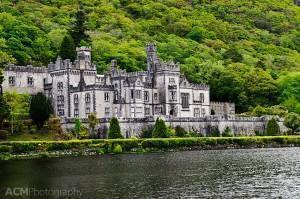
Kylemore Abbey, Connemara, Ireland
When I was in university, I had a poster on my wall of a beautiful castle. It was built of pale grey stone and had turrets and arched windows. It was perched on the edge of a lake and was surrounded by forest. I didn’t know what it was called or where it was located but, for my young self, it represented all that was wild and romantic about travel. I longed to visit it someday.
It wasn’t until many years later, I learned my dream castle was actually Kylemore Abbey, located in the stunning mountains of Connemara, Ireland. At that time, it wasn’t open to the public and I believed I would never get to see my poster castle in person.
So, last spring, when I was researching our Ireland road-trip, I was thrilled to learn Kylemore Abbey is now open to the public. And, even better, the abbey’s immense walled Victorian garden is under restoration and has been open to the public since 1999. I knew we would have to make a detour, north of Shannon, to visit my poster castle.
Aside from the huge parking lot out front, Kylemore was everything I remembered from my poster. We arrived early in the morning and were first through the gates, to catch sight of the view that had graced my dorm room wall for years. The castle; the lake, Lough Pollacappul; the forest, Druchruach Mountain – it was all there and even more breath-taking in person.

My university poster before my own eyes (and camera).
Kylemore Castle was built from 1867 to 1871 by Mitchell and Margaret Henry. For 40 years, they worked to turn the forest and bog-land into a magnificent estate, which eventually covered 13,000 acres. Mitchell also worked to improve conditions for the locals, still recovering from the great famine. He created jobs and provided shelter and even a school for his workers and their families.
Tragedy struck and Mitchell’s wife and daughter both died suddenly. In 1903, he sold Kylemore to the Duke and Duchess of Manchester who lived life a little too large at the castle. After only a few years, the heavily mortgaged Kylemore estate was taken over, by a London banker, until a buyer could be found.
The new owners were a far cry from those previous. The Irish Benedictine Nuns purchased Kylemore Castle along with 10,000 acres, for a little over £45,000, in 1920. We were surprised to learn of the Belgian connection to Kylemore. In fact, the nuns had originally come from Ypres, where their abbey was destroyed in WWI.
The nuns ran a boarding and day school for girls as well as a farm and guesthouse. Over the years, the nuns opened Kylemore to visitors. Today, most of the abbey itself is reserved for the nuns to live and worship.
Four rooms in the abbey have been restored to their former glory. This was our first stop on our visit to Kylemore. Walking through these grand rooms, you get a sense of what Kylemore castle looked like during the Henrys’ time there.
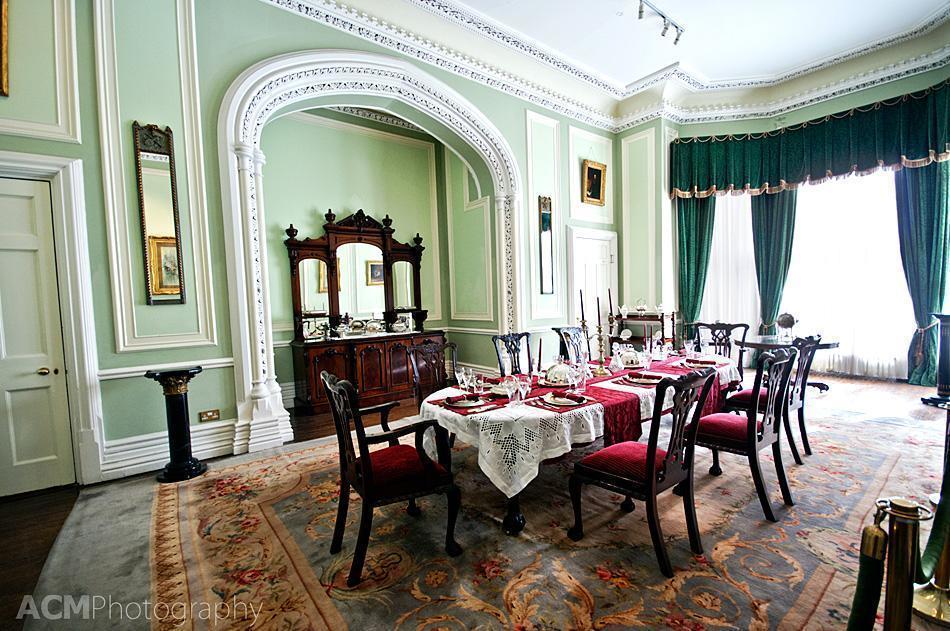
How the dining room may have looked in Mitchell Henry’s time.
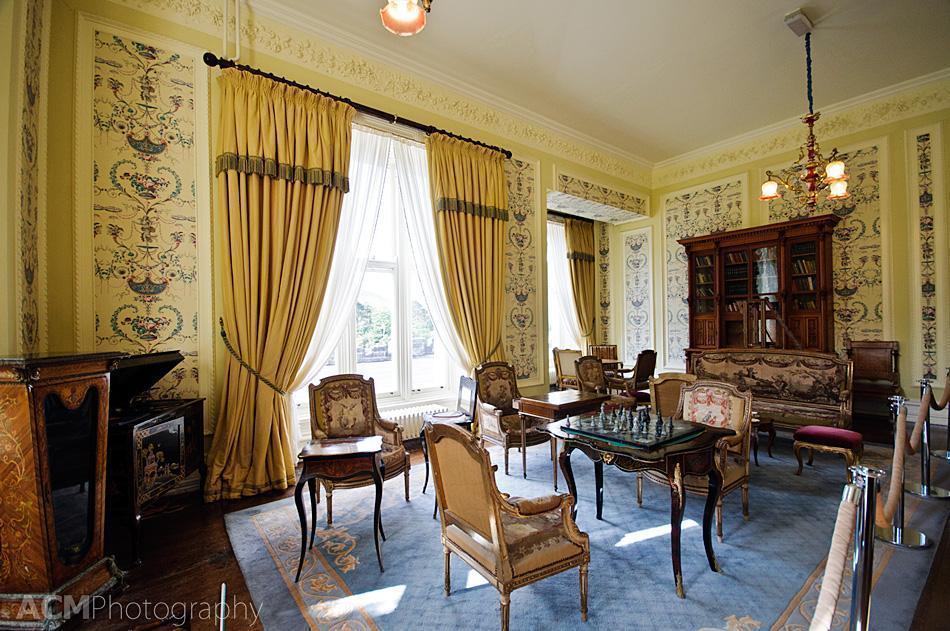
The sitting room of Kylemore Castle
We then made our way down to the gothic church. It was built by Mitchell Henry, for his wife, who died only four years after its construction. It was designed as a miniature cathedral and contains beautiful stained-glass windows. Inside there are marble pillars from different provinces in Ireland; green marble from Connemara (Connaught), red marble from Cork (Munster), black marble from Kilkenny (Leinster) and grey marble from Ulster.
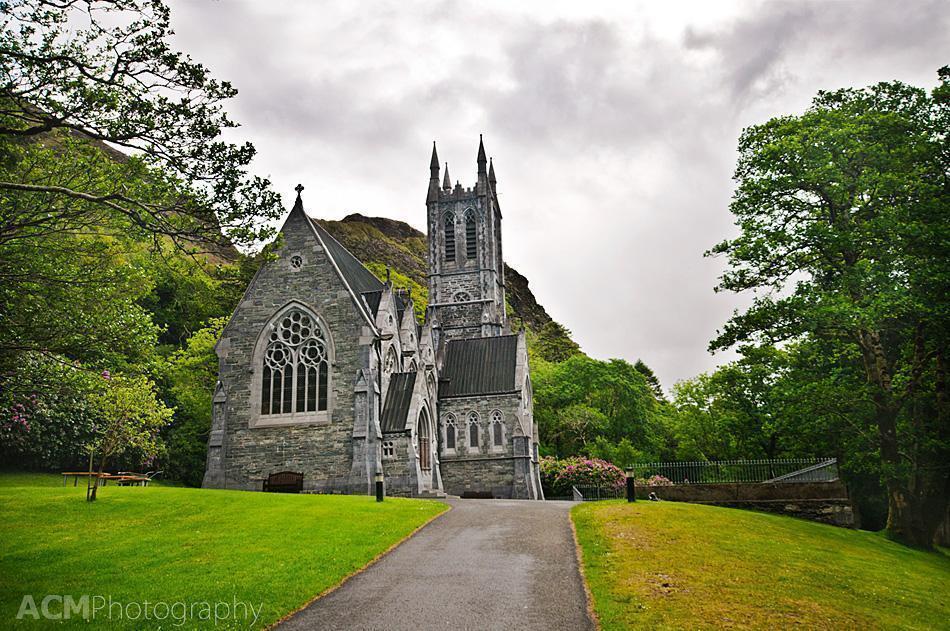
Kylemore Abbey’s Gothic Church

You can see the multi-coloured marble pillars inside the Gothic Church
But of course, for me, the highlight was the 6 acre Victorian Walled Garden. It was quite a trek from the Abbey, but we eschewed the shuttle bus in favour of a leisurely stroll through the stunning Connemara Mountain landscape.
It is easy to see why the Henrys fell in love with this place and why the nuns purchased it years later as their sanctuary. Despite the busy tourist route out front, the abbey still feels miles from anywhere. It is definitely a spiritual retreat.
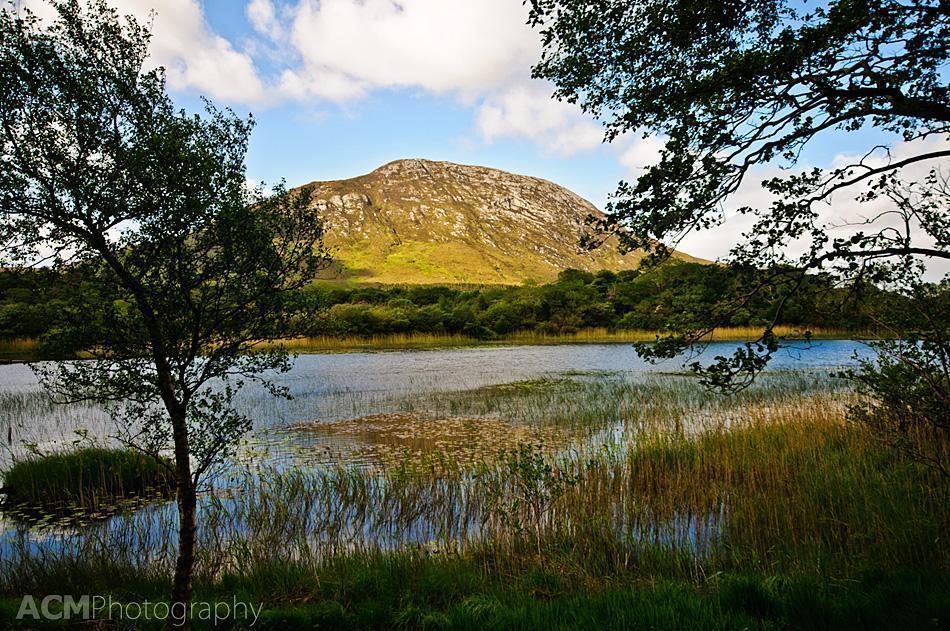
One of the stunning views of the Connemara Mountains from Kylemore Estate
The garden itself did not disappoint, although the erratic weather did try to dampen more than our spirits. Between showers we had a lovely walk through the garden and could imagine what it was like at the height of its glory.
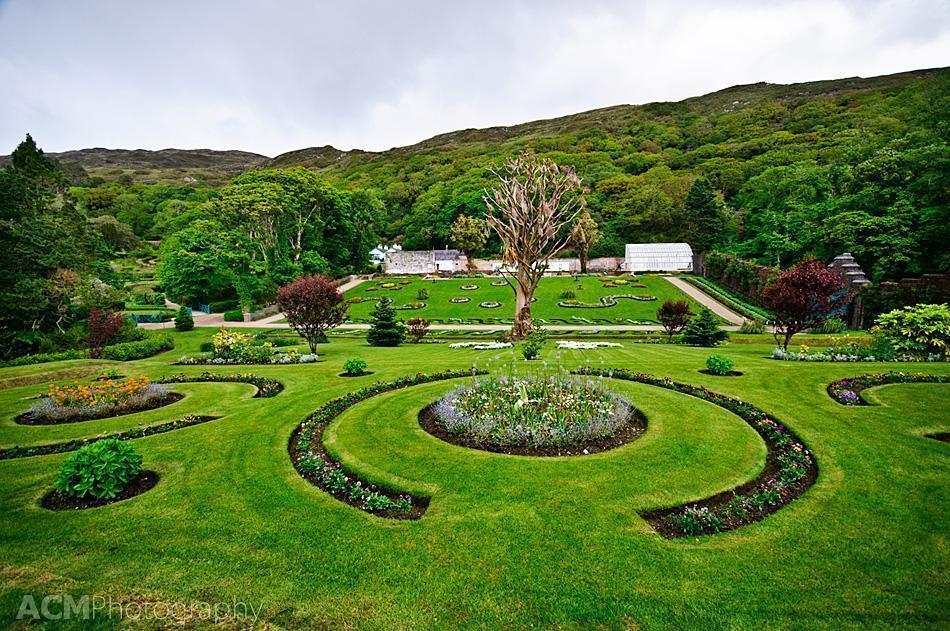
The Victorian Walled Garden at Kylemore Abbey
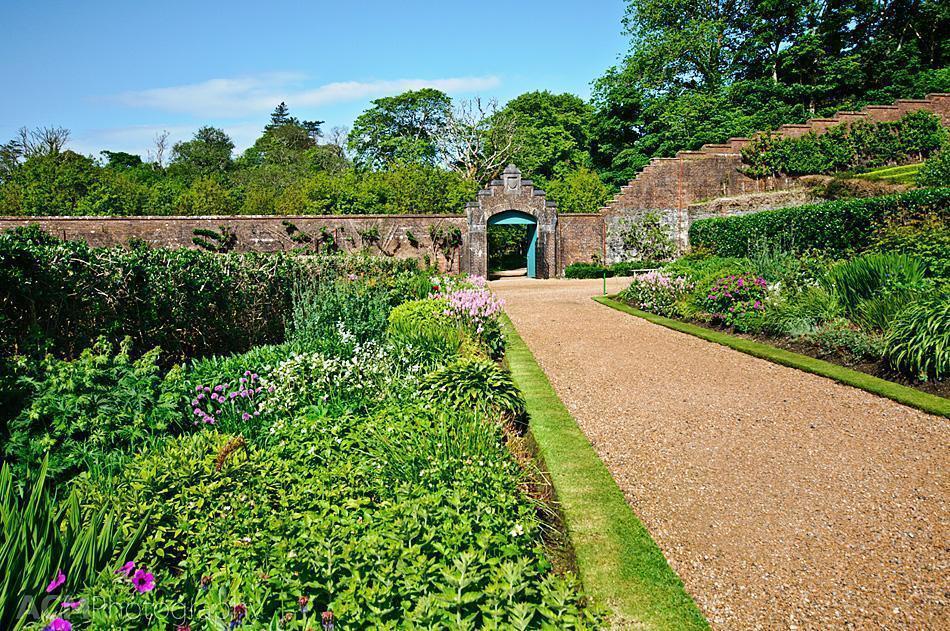
The Victorian Garden Wall
Only plants that grew in Victorian times are planted in the walled garden today. Herbs and vegetables grown here are used in the restaurant and tea room at Kylemore.
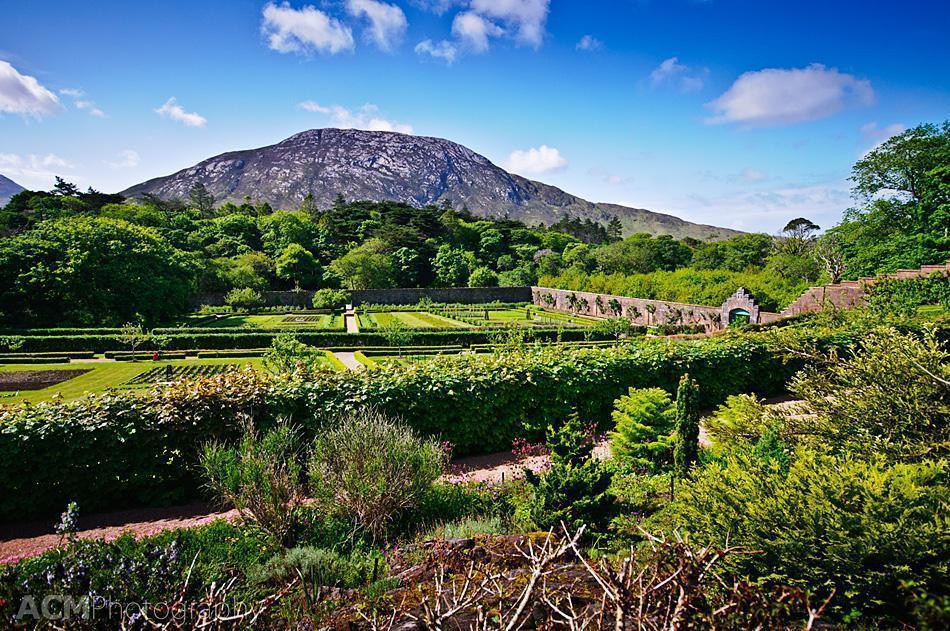
Viewing the Connemara Mountains from the garden
The nuns are also working hard to restore the original 21 glasshouses. So far, two of the glasshouses have been rebuilt along with the Head Gardener’s House and Workman’s Bothy.

The remains of the Victorian Garden’s Buildings
After a beautiful morning at Kylemore, and lots of walking around the estate, we headed for the restaurant. Although it is cafeteria style, the food is worthy of a fine dining restaurant. The traditional Irish dishes are made fresh each day, from seasonal ingredients. Our Irish stew was the best we had encountered in Ireland.
If someone had told me back in my university days, I would one day stand pointing my own Nikon at the same spot as my poster photographer, I would have laughed. Visiting Kylemore Abbey was a dream come true for me and it more than exceeded my expectations.
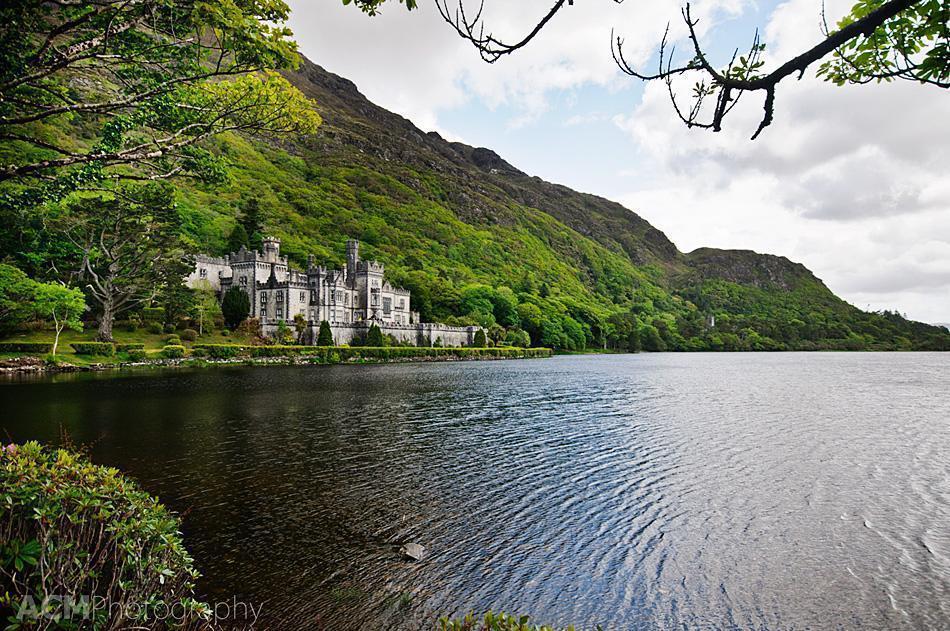
Even more magical in person
For many more photos of Kylemore Abbey and the Victorian Walled Garden, visit our Facebook Page.
- The Ultimate List of Castle Hotels in Belgium - June 10, 2019
- The Ultimate Guide to the Best Things to Do in Normandy, France - February 5, 2019
- The Ultimate Guide to the Best Restaurants in Brussels, Belgium - January 11, 2019

